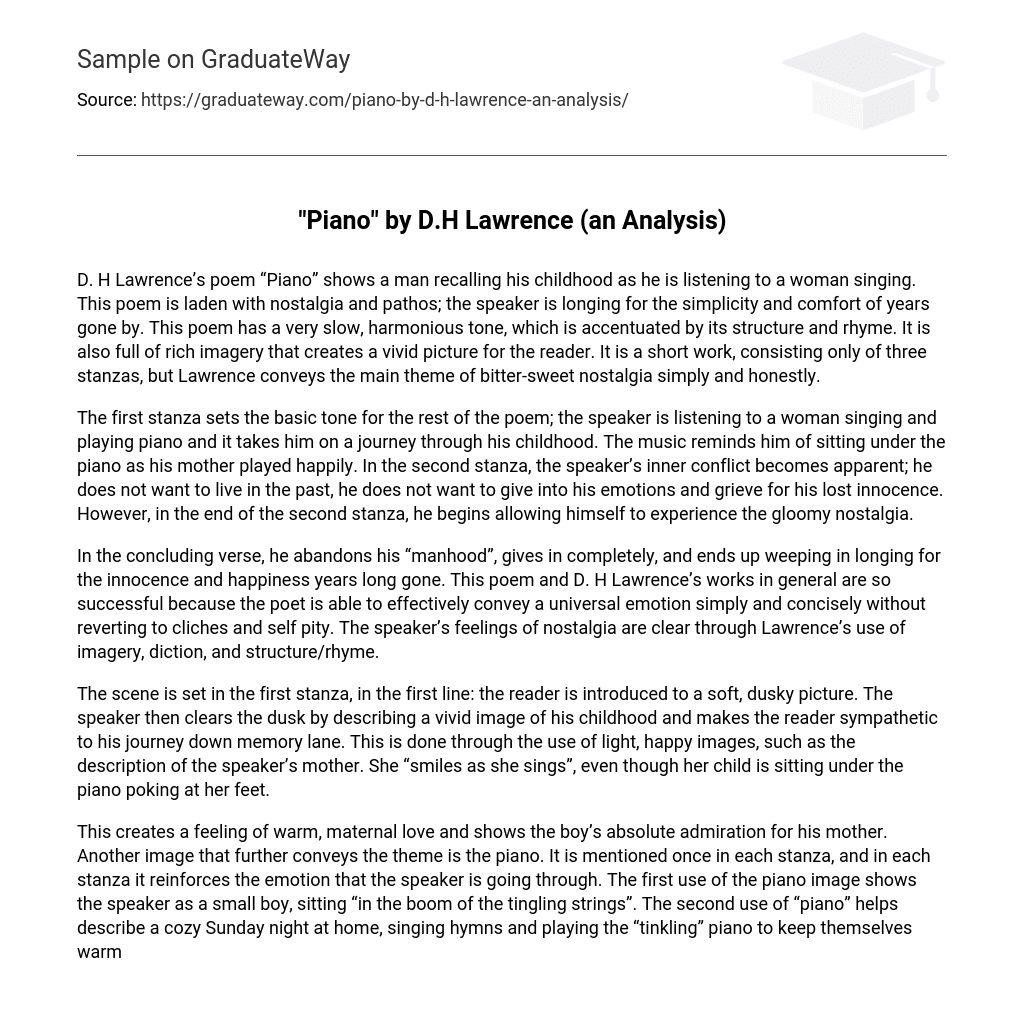D. H Lawrence’s poem “Piano” shows a man recalling his childhood as he is listening to a woman singing. This poem is laden with nostalgia and pathos; the speaker is longing for the simplicity and comfort of years gone by. This poem has a very slow, harmonious tone, which is accentuated by its structure and rhyme. It is also full of rich imagery that creates a vivid picture for the reader. It is a short work, consisting only of three stanzas, but Lawrence conveys the main theme of bitter-sweet nostalgia simply and honestly.
The first stanza sets the basic tone for the rest of the poem; the speaker is listening to a woman singing and playing piano and it takes him on a journey through his childhood. The music reminds him of sitting under the piano as his mother played happily. In the second stanza, the speaker’s inner conflict becomes apparent; he does not want to live in the past, he does not want to give into his emotions and grieve for his lost innocence. However, in the end of the second stanza, he begins allowing himself to experience the gloomy nostalgia.
In the concluding verse, he abandons his “manhood”, gives in completely, and ends up weeping in longing for the innocence and happiness years long gone. This poem and D. H Lawrence’s works in general are so successful because the poet is able to effectively convey a universal emotion simply and concisely without reverting to cliches and self pity. The speaker’s feelings of nostalgia are clear through Lawrence’s use of imagery, diction, and structure/rhyme.
The scene is set in the first stanza, in the first line: the reader is introduced to a soft, dusky picture. The speaker then clears the dusk by describing a vivid image of his childhood and makes the reader sympathetic to his journey down memory lane. This is done through the use of light, happy images, such as the description of the speaker’s mother. She “smiles as she sings”, even though her child is sitting under the piano poking at her feet.
This creates a feeling of warm, maternal love and shows the boy’s absolute admiration for his mother. Another image that further conveys the theme is the piano. It is mentioned once in each stanza, and in each stanza it reinforces the emotion that the speaker is going through. The first use of the piano image shows the speaker as a small boy, sitting “in the boom of the tingling strings”. The second use of “piano” helps describe a cozy Sunday night at home, singing hymns and playing the “tinkling” piano to keep themselves warm





